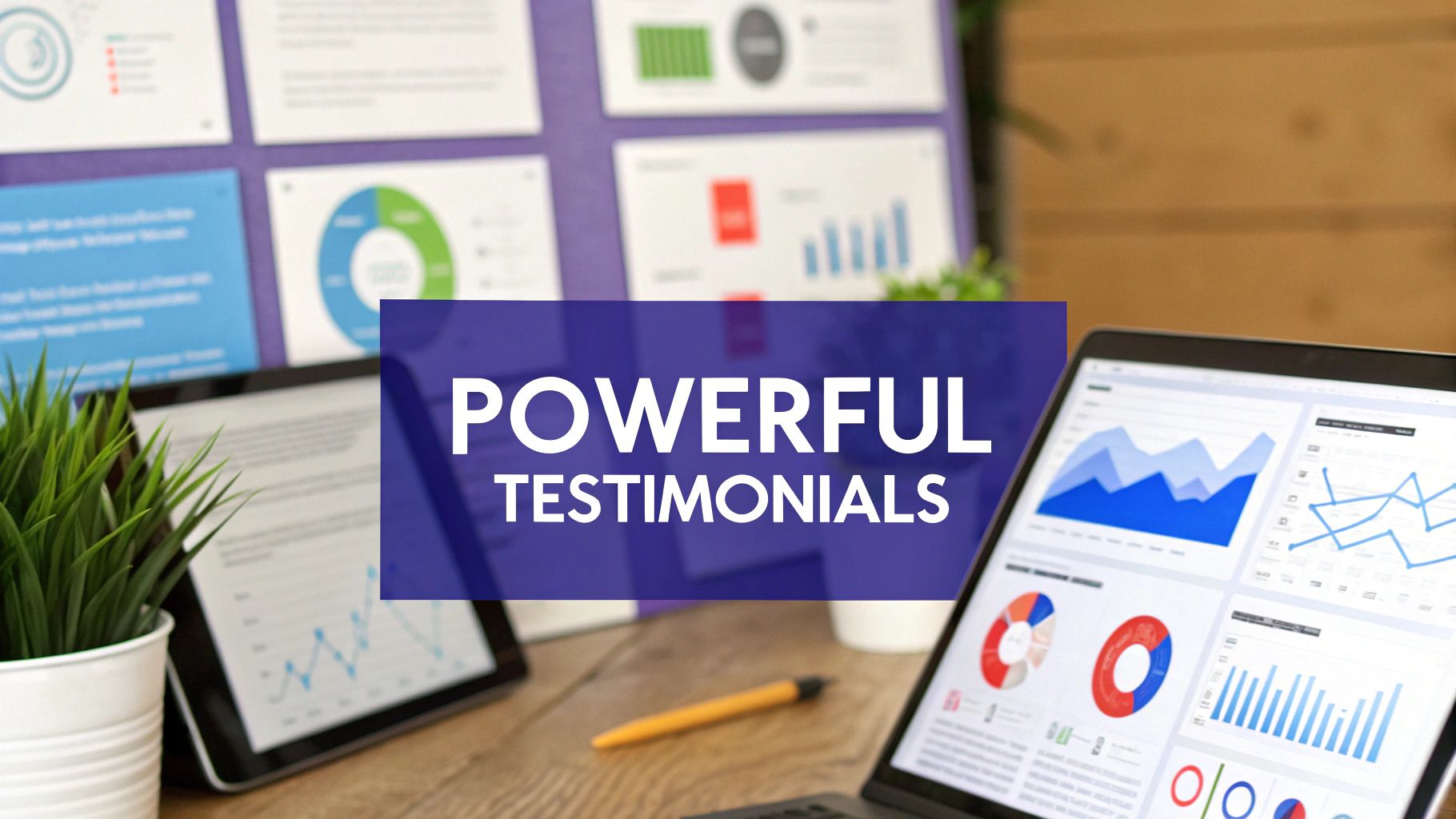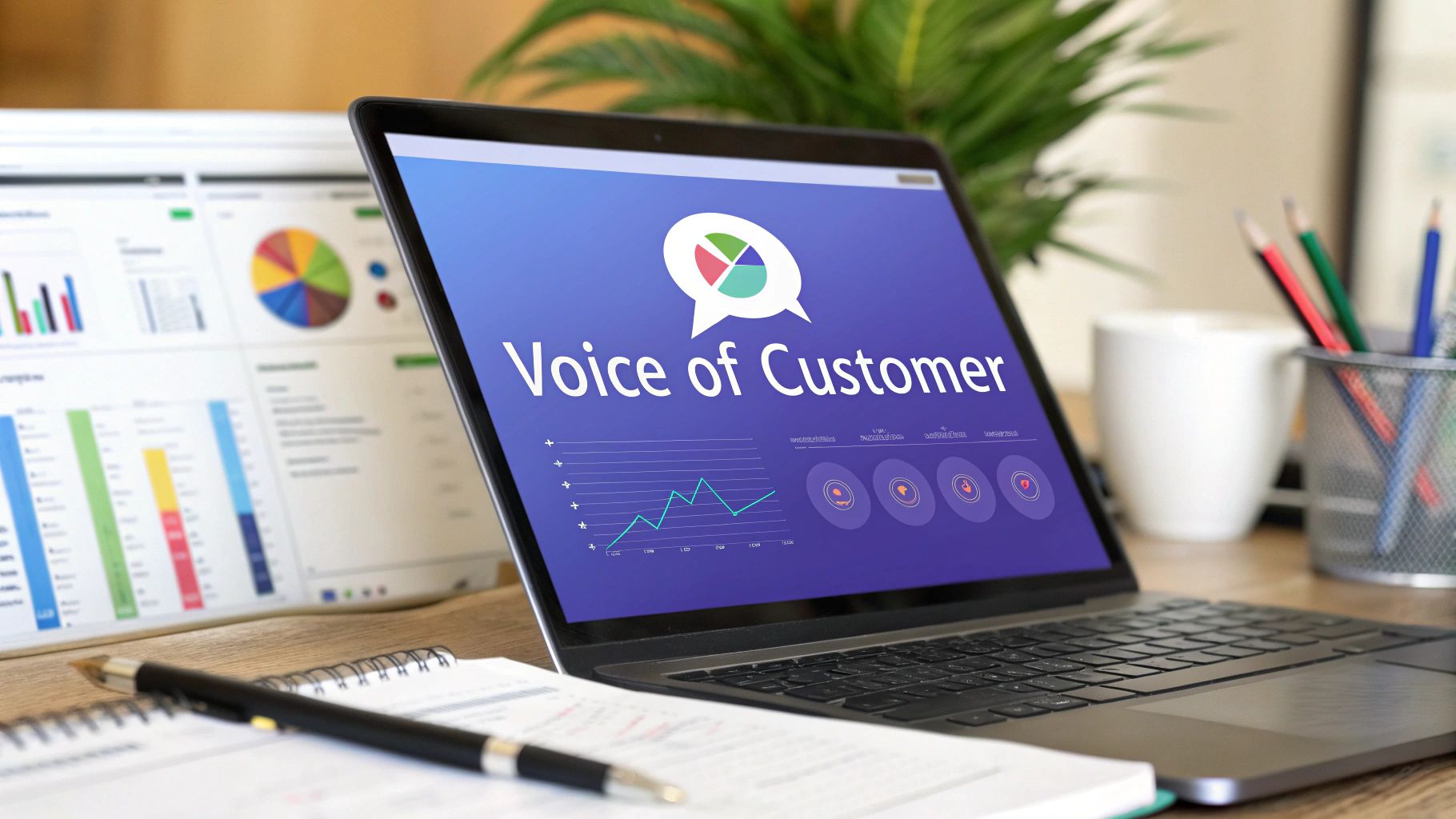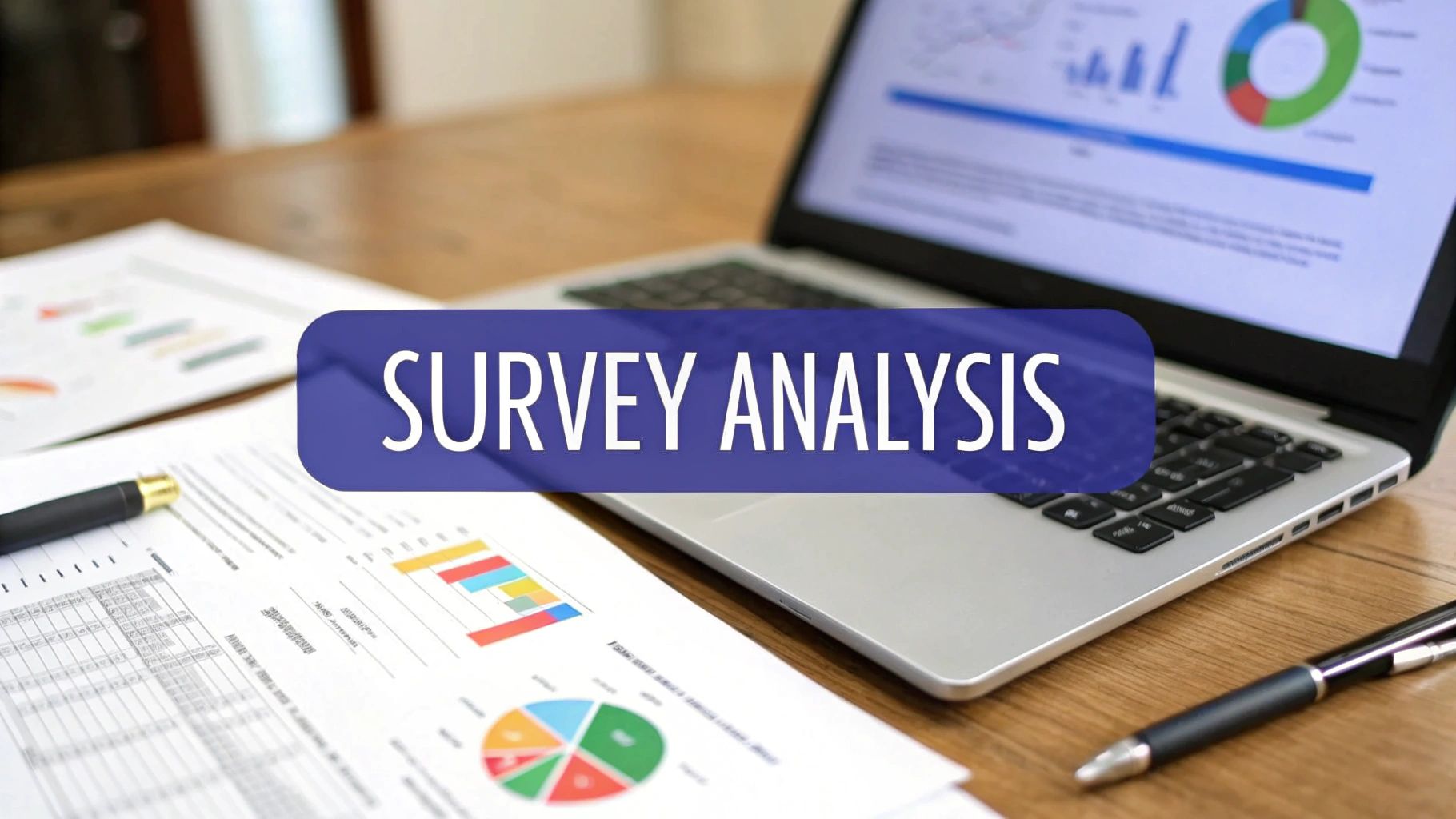12 Best Free Customer Survey Templates for SaaS in 2025
Discover the top free customer survey templates for SaaS teams. Boost retention and get actionable feedback with our curated, customizable templates.
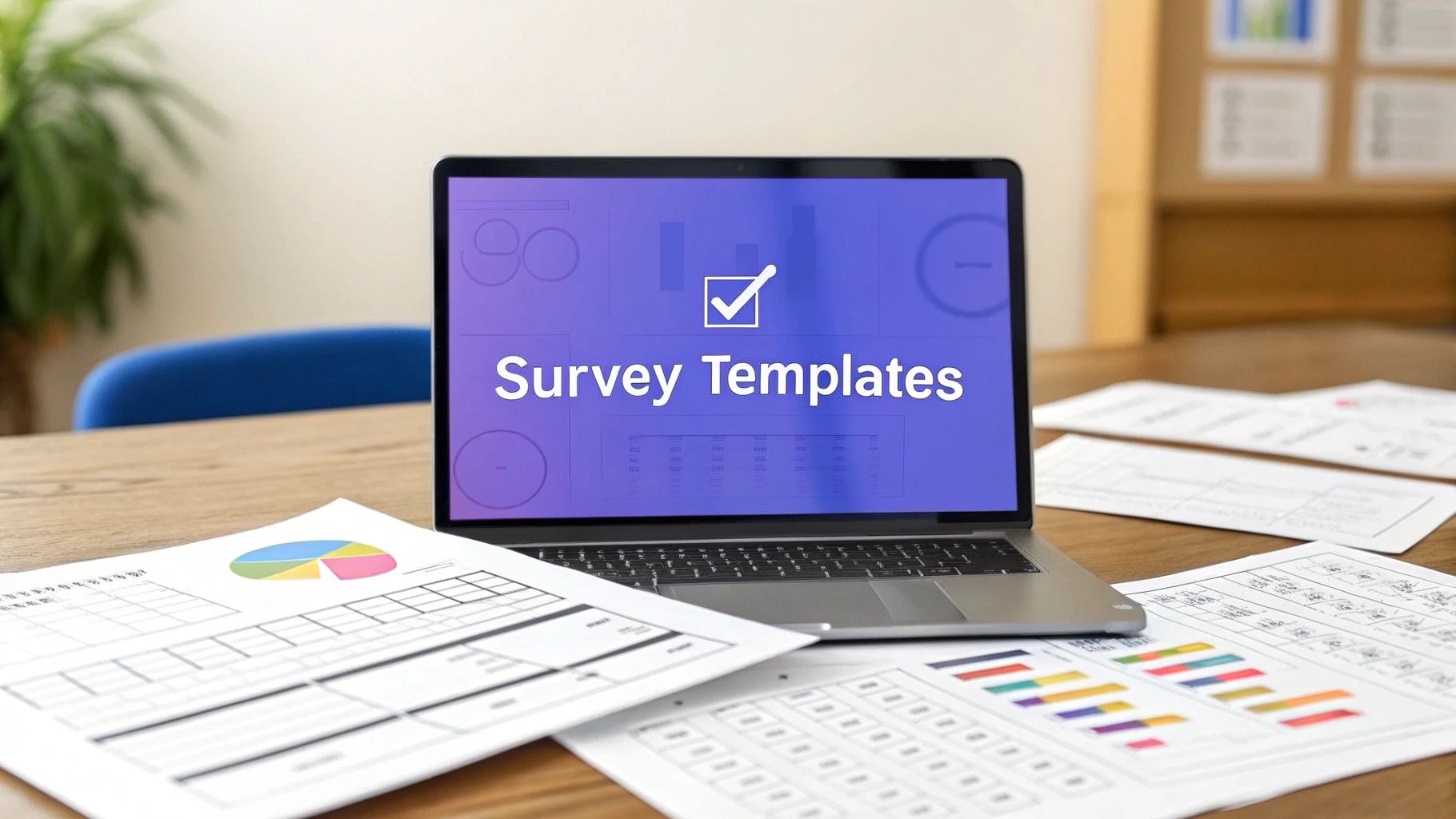
In the fast-paced SaaS world, generic feedback forms just don't cut it. They yield vague answers, suffer from low response rates, and ultimately fail to provide the actionable insights needed to reduce churn and drive growth. The key isn't just asking questions; it's asking the right questions at the right time, directly within the user's workflow. This is where strategically designed customer survey templates become a superpower for product, marketing, and success teams.
This guide moves beyond the obvious, providing a detailed breakdown of 12 exceptional sources for free customer survey templates, specifically curated for the challenges modern SaaS companies face. We'll analyze their real-world applications, from capturing post-onboarding feedback to digging into churn analysis, showing you how to implement them effectively. Our goal is to help you gather data that truly informs your product roadmap, improves user experience, and boosts your retention strategy.
Each platform in this listicle is reviewed with a practical focus. You will find screenshots, direct links, and an honest assessment of its strengths and limitations for specific SaaS use cases. Forget sifting through countless generic options; this resource is your shortcut to finding the perfect survey template to get the precise customer feedback you need to grow.
1. Top Free Customer Satisfaction Survey Templates for 2025
Surva.ai stands out as a premier resource for SaaS companies seeking expertly crafted free customer survey templates. More than just a simple repository, this platform provides a comprehensive toolkit designed to transform customer feedback into a strategic growth engine. Its templates are specifically engineered for the SaaS lifecycle, covering critical touchpoints like user onboarding, post-purchase follow-ups, and cancellation flows.
The true power of Surva.ai lies in its integration of these templates with an AI-driven platform. This allows SaaS teams to not only collect data but to act on it in real time. For instance, a negative response on a post-trial survey can automatically trigger a personalized retention offer, directly addressing churn risk at the source.
Key Strengths and Use Cases
- SaaS-Centric Design: Templates are built to address unique SaaS challenges, from measuring feature adoption to understanding user sentiment after a major update.
- Actionable AI Integration: Seamlessly connect survey responses to automated actions, such as triggering personalized emails, Slack notifications for the success team, or churn deflection offers via Stripe.
- Multi-Channel Deployment: Embed surveys as website widgets, send them via email, or integrate them directly into your application's user interface for maximum reach.
- Robust Analytics: The platform provides real-time reporting and insightful dashboards that help you identify trends and make data-driven decisions quickly.
Beyond the templates themselves, exploring various customer satisfaction survey examples can provide inspiration and practical insights for your own feedback collection. For those looking to optimize their approach further, Surva.ai also offers guidance on survey design; you can learn more about customer survey best practices on surva.ai.
Access: https://www.surva.ai/blog/free-customer-satisfaction-survey-templates
2. Qualtrics
Qualtrics stands out for SaaS teams that prioritize data integrity and methodological rigor in their feedback collection. Unlike platforms that simply offer basic question sets, Qualtrics provides over 50 free customer survey templates designed by Ph.D. researchers. This ensures that the questions, flow, and structure adhere to established best practices, leading to more reliable and actionable insights.
The platform is particularly valuable for in-depth research, such as detailed product feature feedback, competitive analysis, or comprehensive customer satisfaction (CSAT) studies. The user-friendly interface simplifies customization, allowing teams to adapt these expert-built frameworks to their specific brand and product context without sacrificing quality.
Key Details & Analysis
- Best Use Case: Ideal for product and research teams needing scientifically validated surveys for critical business decisions, like post-purchase feedback or Net Promoter Score (NPS) tracking.
- Unique Offering: The primary differentiator is the "expert-designed" aspect. These aren't just templates; they are research instruments crafted to avoid common biases and capture accurate sentiment.
- Limitations: While the free tier is generous, accessing the full suite of advanced logic, branching, and in-depth analytics often requires upgrading to a paid plan.
- Implementation Tip: Start with a standard template like "Website Visitor Profile" to get a feel for the platform's structure. Pay close attention to the pre-written question explanations to understand the research methodology behind them.
Access the templates here: Qualtrics Survey Templates
3. SurveyMonkey
SurveyMonkey is arguably one of the most recognized names in online surveys, making it an excellent starting point for teams needing a wide array of reliable templates without a steep learning curve. The platform offers a comprehensive library of free customer survey templates, from customer satisfaction to service feedback, built by their own survey experts. This accessibility makes it easy for any team member, regardless of research experience, to deploy a well-structured survey quickly.
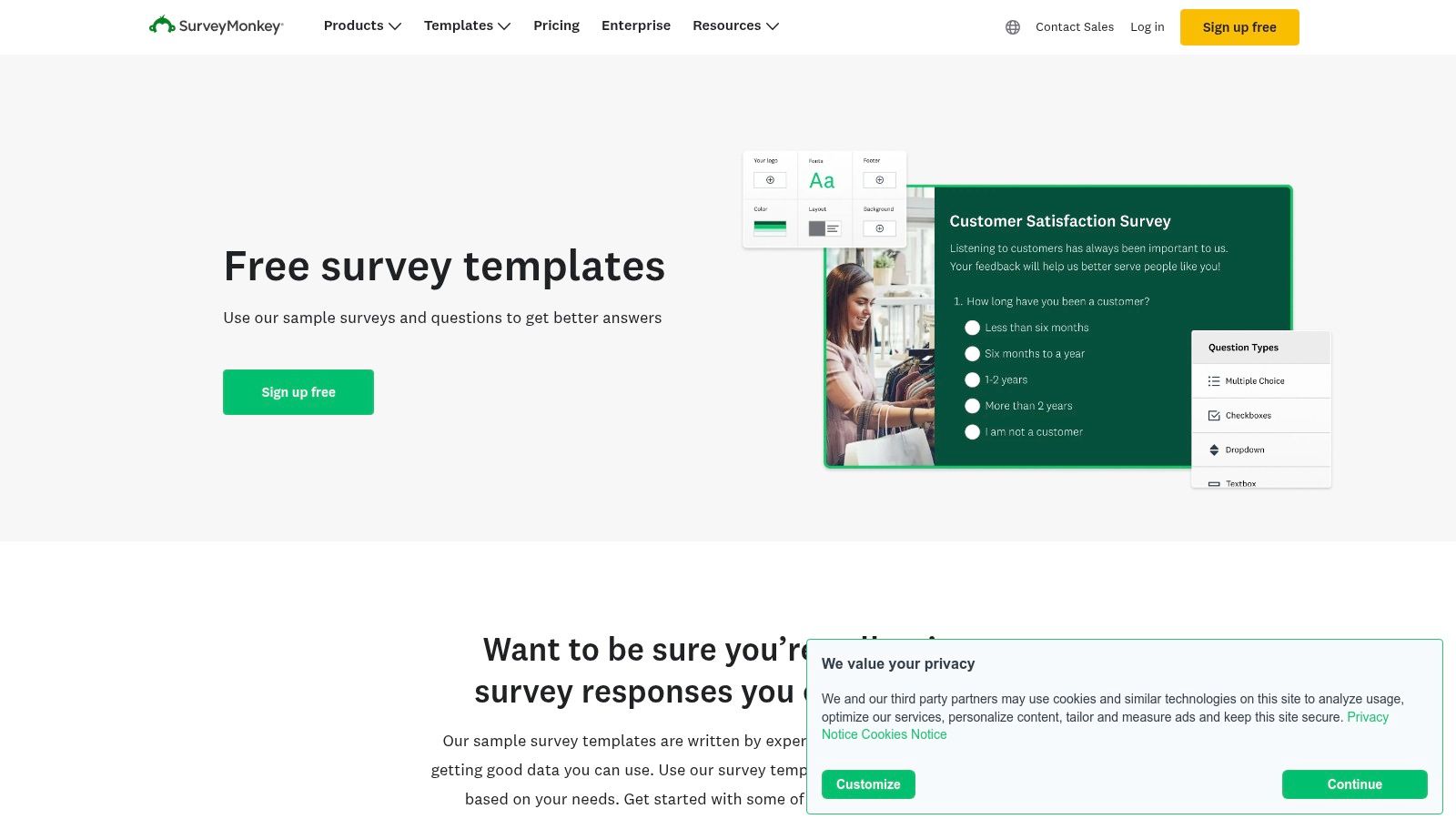
Its strength lies in its intuitive interface and broad applicability. Whether you're a marketing team gauging brand perception or a customer success team measuring post-interaction satisfaction, SurveyMonkey has a pre-built, customizable framework ready to go. The real-time response tracking on the free plan provides immediate feedback, allowing for agile adjustments to customer-facing strategies.
Key Details & Analysis
- Best Use Case: Perfect for marketing and customer success teams who need to quickly gather feedback on a variety of topics without needing deep statistical analysis or advanced logic.
- Unique Offering: Its primary differentiator is the combination of a user-friendly interface with a vast template library. This balance makes it the go-to for general-purpose feedback collection.
- Limitations: The free plan limits the number of questions per survey and responses you can view. Advanced customization, logic branching, and deeper analytics are reserved for paid tiers.
- Implementation Tip: Use the "Customer Service Feedback" template as a starting point. Its simple structure is great for understanding how to edit questions and view real-time results before moving to more complex templates.
Access the templates here: SurveyMonkey Free Templates
4. Jotform
Jotform excels in offering an enormous library of free customer survey templates combined with a highly intuitive drag-and-drop builder. For SaaS teams that need to create and deploy varied surveys quickly without any coding, Jotform is a powerhouse of flexibility and speed. Its sheer volume of templates means you can find a starting point for almost any use case imaginable.
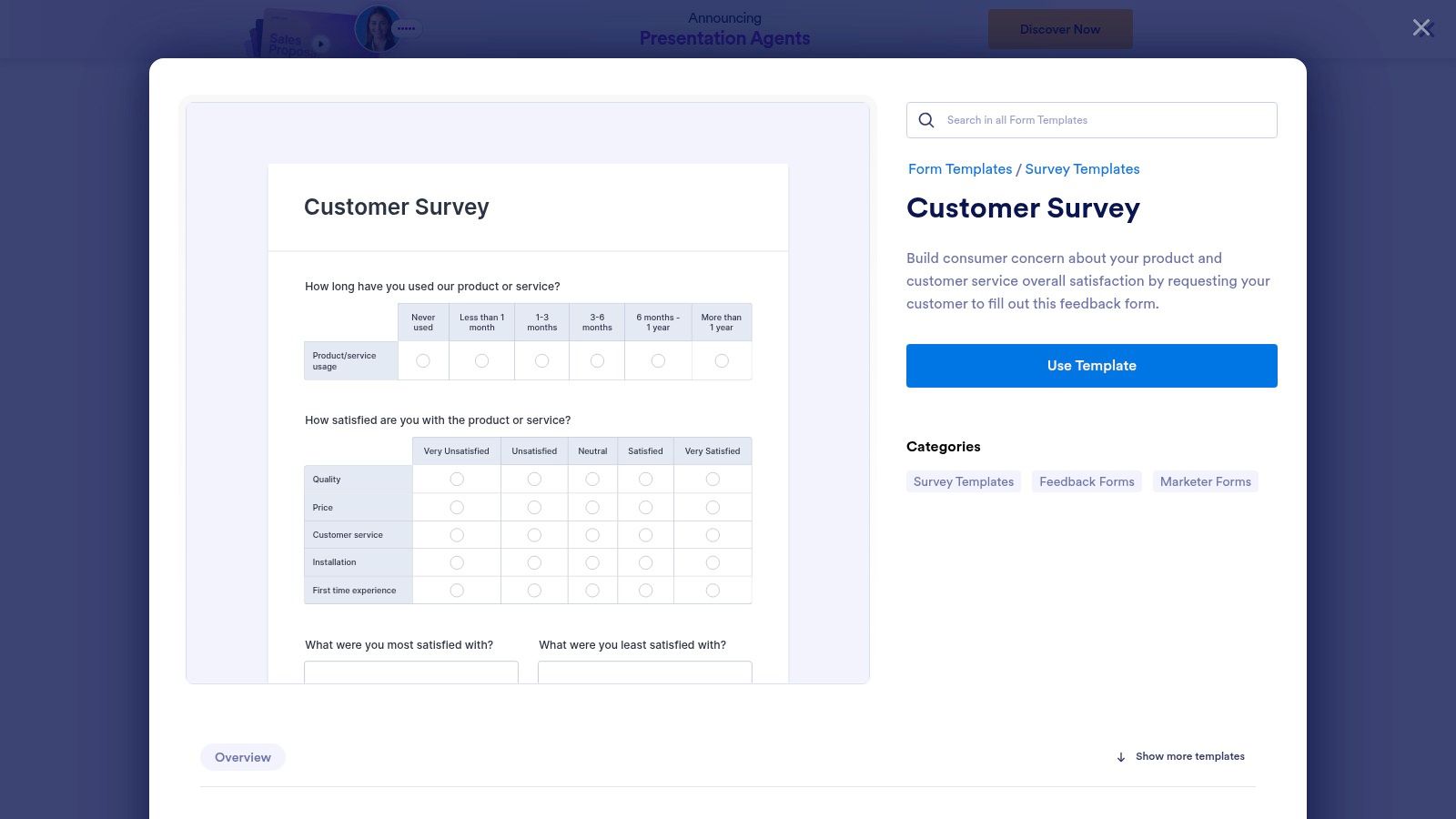
The platform’s strength lies in its customization and integration capabilities. Teams can easily modify any template to match their brand’s look and feel, and then connect the form to hundreds of other applications like Slack, Google Sheets, or their CRM. This makes it simple to automate workflows and ensure feedback data flows directly into the systems where it's needed most, a key factor for improving survey engagement. For further reading, you can learn more about how to increase survey response rates.
Key Details & Analysis
- Best Use Case: Ideal for marketing and customer success teams needing to quickly build and deploy a wide range of branded surveys, from simple contact forms to detailed event feedback.
- Unique Offering: The combination of over 10,000 templates with a powerful, no-code visual editor makes it one of the most versatile and accessible form builders on the market.
- Limitations: The free plan is quite functional but is capped at five forms and 100 monthly submissions, which may be restrictive for high-growth SaaS companies.
- Implementation Tip: Use the "Conditional Logic" feature to create dynamic surveys that show or hide questions based on user answers. This personalizes the experience and keeps surveys concise.
Access the templates here: Jotform Customer Survey Templates
5. Typeform
Typeform transforms the survey experience from a static form into a dynamic, one-question-at-a-time conversation. This human-centered approach is its core strength, making it an excellent choice for SaaS teams focused on boosting engagement and completion rates. Instead of overwhelming users with a long list of questions, Typeform presents a sleek, interactive interface that feels more like a chat, which is particularly effective for collecting customer feedback or lead generation data.
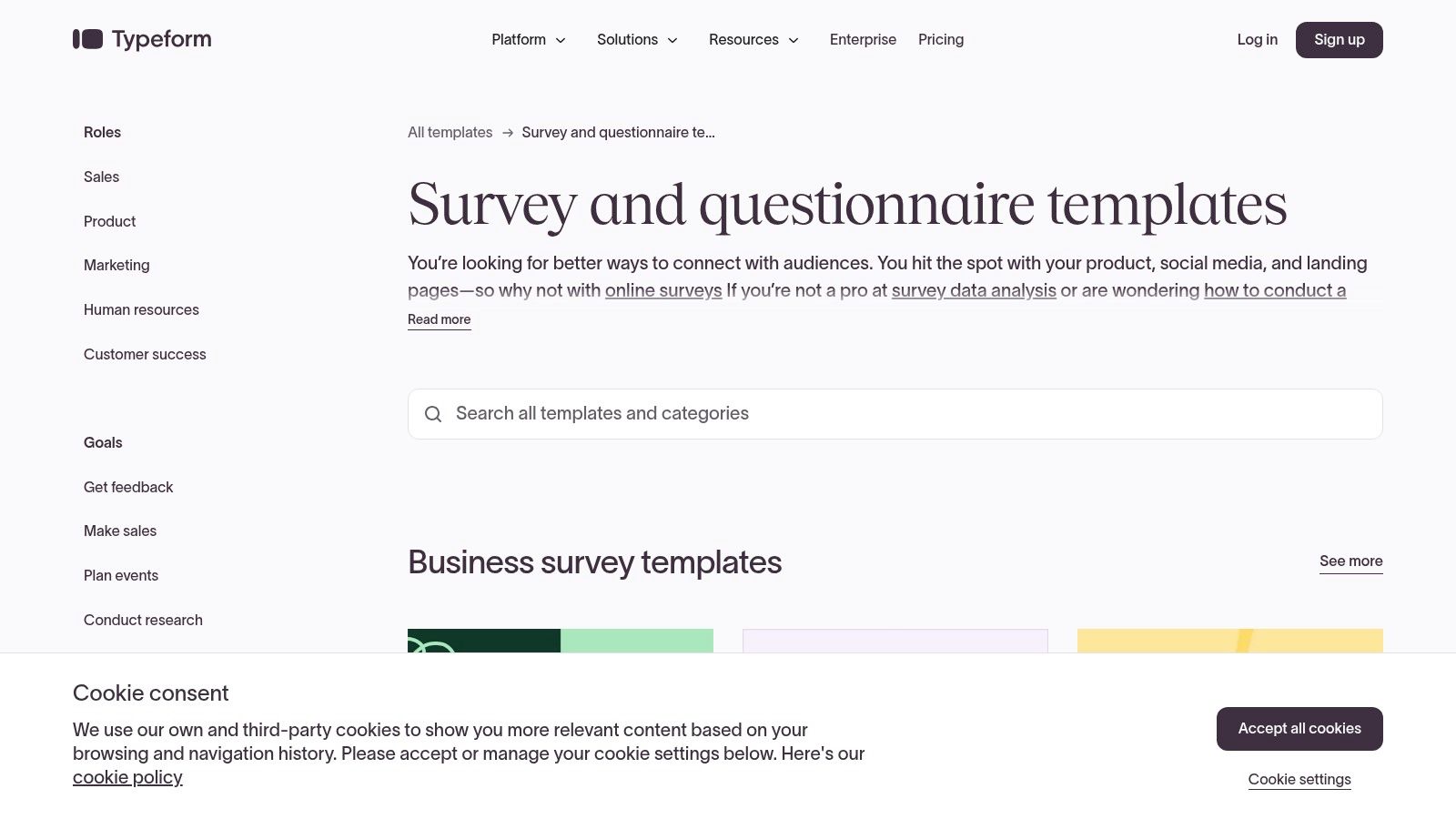
The platform offers a rich library of free customer survey templates that are fully customizable. Teams can easily modify designs, add logic jumps to create personalized question paths, and integrate with essential tools like Google Sheets, Slack, and Mailchimp. This makes it simple to automate workflows and channel feedback directly to the right teams without manual effort.
Key Details & Analysis
- Best Use Case: Perfect for user-facing surveys where experience is paramount, such as customer onboarding feedback, event registration forms, or short satisfaction polls embedded on a website.
- Unique Offering: Its signature "one question at a time" conversational format is highly effective at reducing survey fatigue and is proven to increase response rates compared to traditional forms.
- Limitations: The free plan is quite restrictive, limiting users to only 10 responses per month per form. This makes it suitable for very small-scale testing or internal use but requires an upgrade for any meaningful customer-facing campaign.
- Implementation Tip: Use the "Logic Jumps" feature even on simple surveys. For example, if a user gives a low CSAT score, you can automatically route them to a qualitative question asking for more details, providing deeper insights into dissatisfaction.
Access the templates here: Typeform Survey Templates
6. ClickUp
ClickUp offers a unique approach by integrating free customer survey templates directly into its robust project management ecosystem. This is ideal for teams that want to immediately translate customer feedback into actionable tasks. Instead of exporting data from a separate survey tool, ClickUp allows you to capture responses and convert them into trackable items within your existing workflows, bridging the gap between insight and execution.
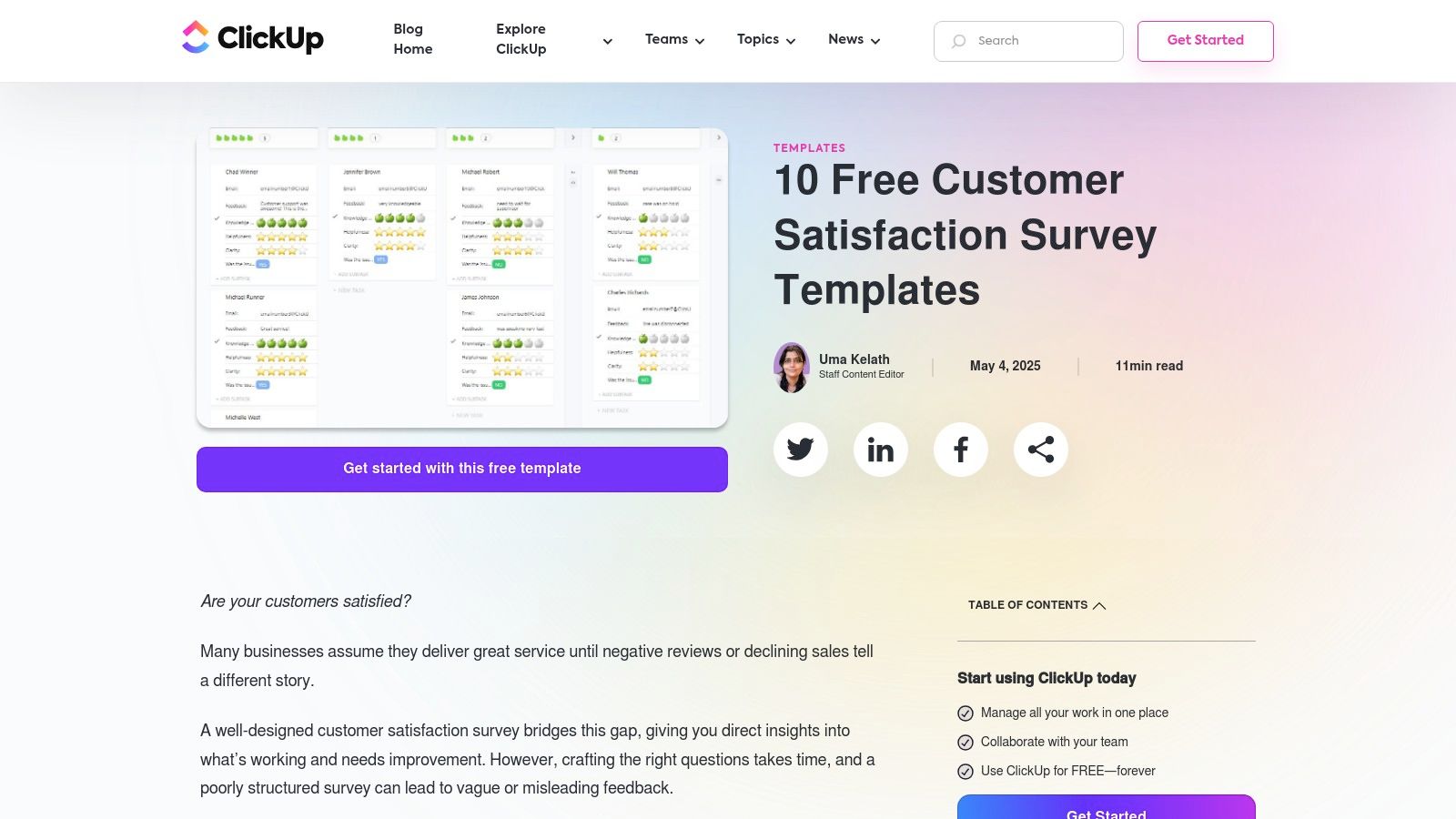
The platform excels at operationalizing feedback. For instance, a negative CSAT response can automatically trigger a task for a customer success manager to follow up, while a feature request can be routed directly to the product team’s backlog. This direct integration makes it a powerful tool for agile teams focused on continuous improvement based on real-time customer input.
Key Details & Analysis
- Best Use Case: Excellent for product and customer success teams who need to close the feedback loop by turning survey results into assigned tasks and projects.
- Unique Offering: The native integration of survey collection with task management is its core differentiator. This eliminates manual data transfer and ensures feedback is acted upon promptly.
- Limitations: Because its primary function is project management, the survey-building features are less advanced than dedicated survey platforms. Also, new users might face a learning curve due to the platform's extensive capabilities.
- Implementation Tip: Use ClickUp Forms to build your survey and connect it to a specific List. Customize statuses (e.g., "New," "In Progress," "Resolved") to track the lifecycle of each piece of feedback.
Access the templates here: ClickUp Customer Satisfaction Survey Templates
7. Help Scout
Help Scout excels by providing free customer survey templates specifically designed for improving customer service interactions. Rather than offering a broad library, its resources are tightly focused on gathering actionable feedback for support teams. This makes it an invaluable resource for SaaS companies looking to measure and enhance the quality of their customer-facing support without needing a complex tool.
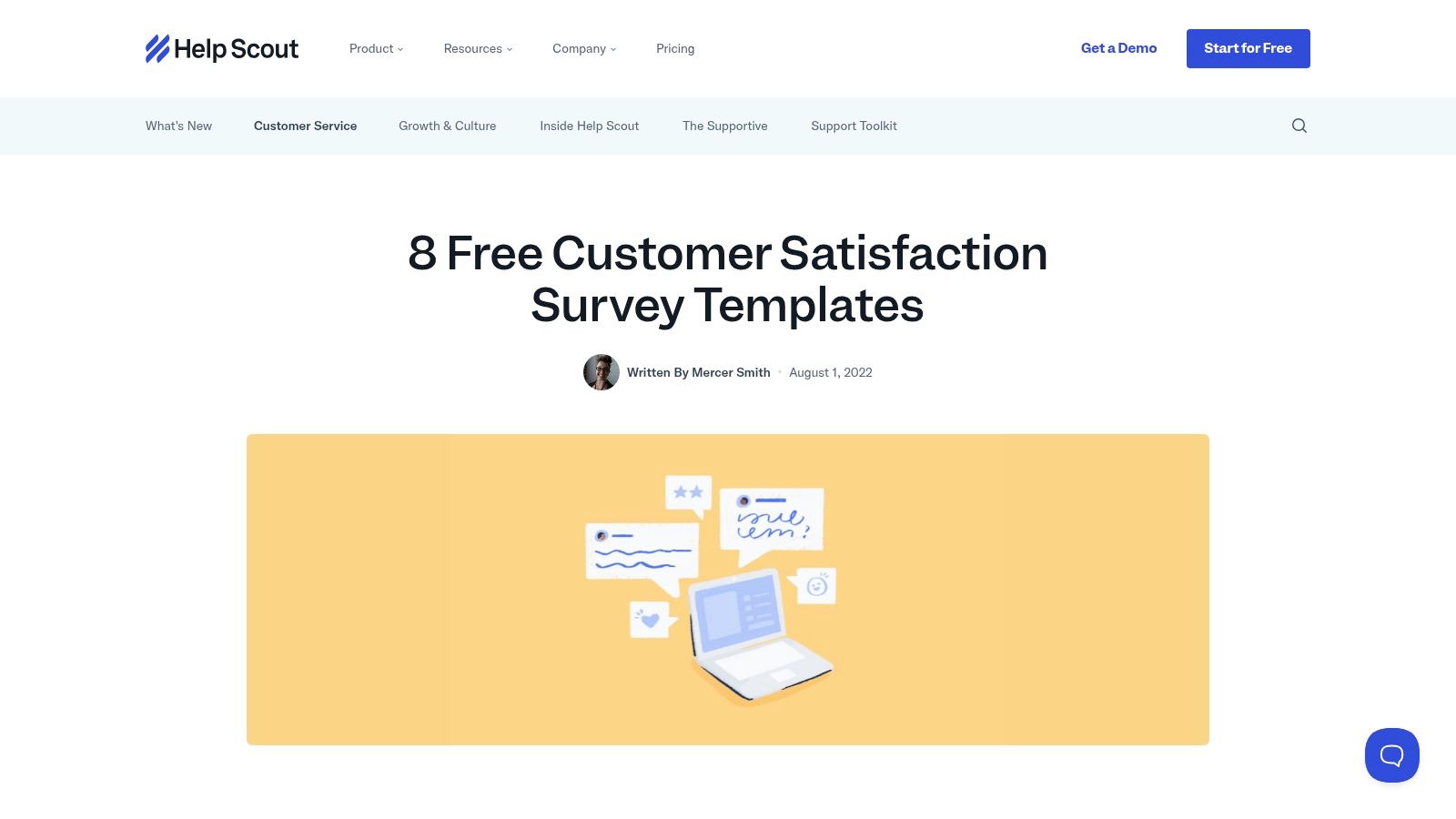
The platform's approach is more educational than a simple template repository. It provides context and best practices alongside the questions, guiding teams on how to effectively deploy surveys and interpret the results. This focus on practical application ensures that even teams new to service metrics can implement a feedback loop that genuinely drives improvement.
Key Details & Analysis
- Best Use Case: Ideal for customer success and support managers who need to measure agent performance, gauge satisfaction after a support ticket is resolved, or understand overall service quality.
- Unique Offering: The key differentiator is its no-gate, content-first approach. You can access and use the survey questions and implementation advice directly from their blog post without signing up or creating an account.
- Limitations: The template selection is highly specialized and almost exclusively covers customer service scenarios. Teams looking for product, marketing, or general-purpose surveys will need to look elsewhere.
- Implementation Tip: Use these templates as a starting point. Copy the questions for a specific scenario, like "Post-Support Interaction," and paste them into your existing email or survey tool to quickly gather targeted feedback.
Access the templates here: Help Scout Customer Satisfaction Survey Templates
8. HubSpot
HubSpot is an excellent choice for teams already invested in its ecosystem, offering a suite of free customer survey templates designed to integrate directly with its powerful CRM. This connection allows SaaS businesses to not only collect feedback but also tie it directly to individual customer records, creating a holistic view of the customer journey from marketing touchpoints to post-purchase sentiment.
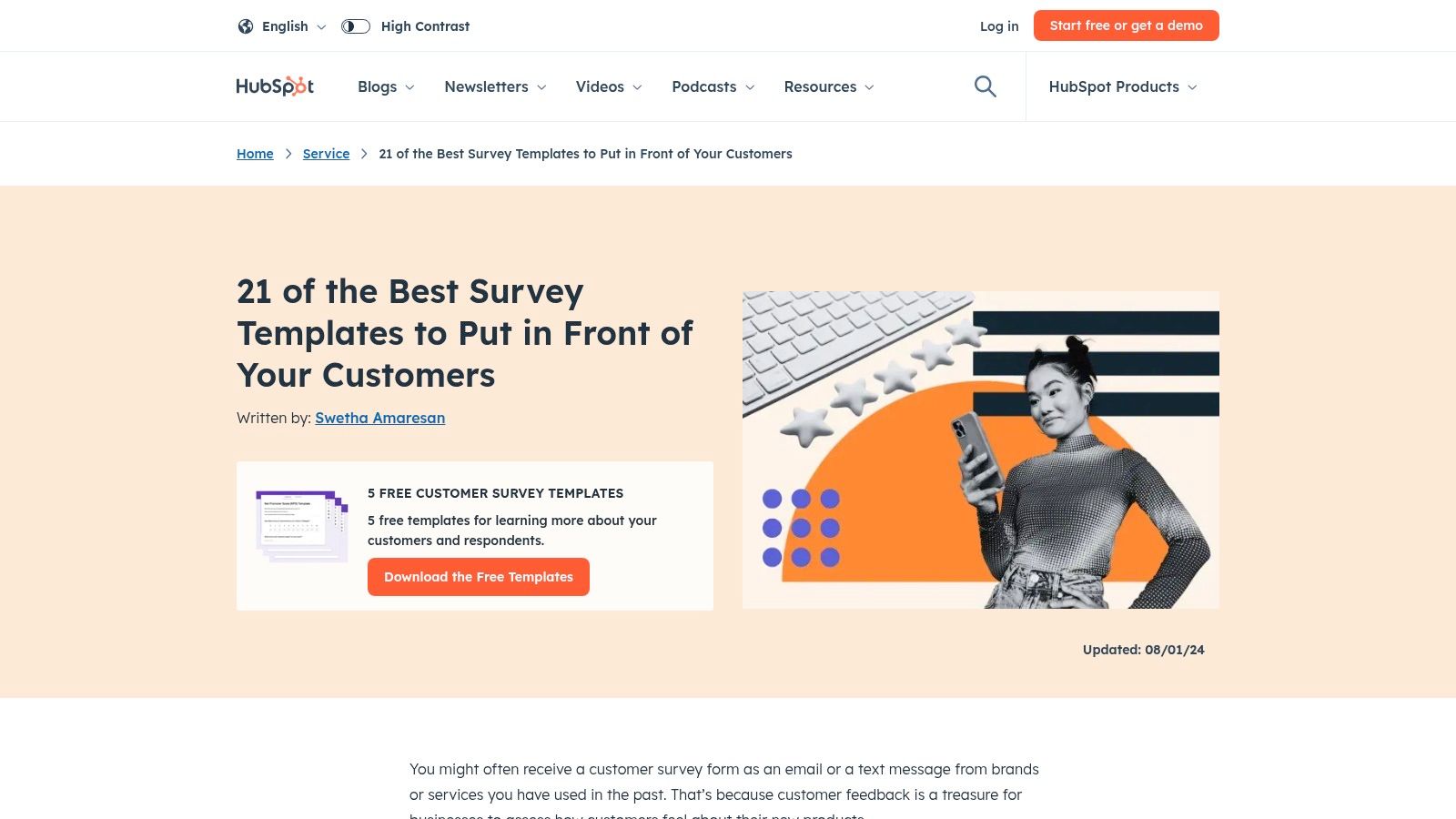
The platform provides foundational templates for key metrics like Net Promoter Score (NPS), Customer Effort Score (CES), and Customer Satisfaction (CSAT). While they may not have the deep methodological rigor of specialized research tools, their strength lies in accessibility and immediate integration, making them perfect for teams looking to quickly implement and automate feedback loops.
Key Details & Analysis
- Best Use Case: Marketing and customer success teams using the HubSpot CRM who want to trigger surveys based on customer lifecycle stages and analyze feedback within the same platform.
- Unique Offering: The native integration is the key differentiator. Feedback data enriches customer profiles, enabling highly personalized follow-ups and segmentation for targeted marketing campaigns.
- Limitations: The full power and automation capabilities are unlocked when you are using the broader HubSpot platform. For teams not using HubSpot's CRM, these templates function more as standalone guides than integrated tools.
- Implementation Tip: Use HubSpot’s automation workflows to send a CSAT survey immediately after a support ticket is closed. This provides timely, context-rich feedback that can be tied directly to a specific service interaction. To get the most out of it, explore some expert recommendations on how to get customer feedback effectively.
Access the templates here: HubSpot Survey Templates
9. SurveyLegend
SurveyLegend carves out its niche by focusing on visually striking, mobile-first survey design. For SaaS teams concerned with brand aesthetics and user experience, this platform offers a powerful drag-and-drop builder to create surveys that feel less like a clinical questionnaire and more like an interactive brand touchpoint. Its free customer survey templates are built to be beautiful and responsive right out of the box, ensuring high completion rates across all devices.
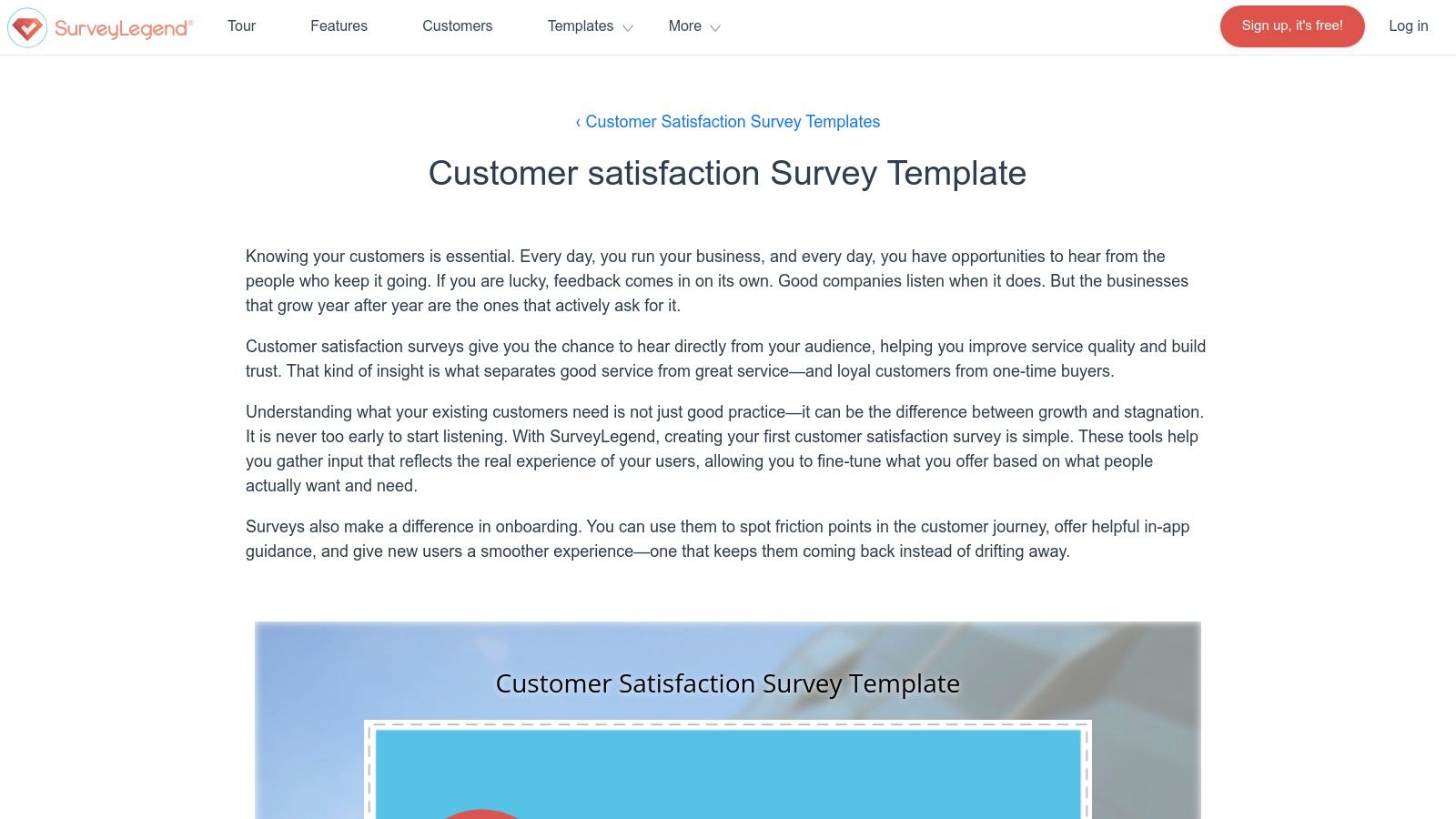
The emphasis on visual appeal makes it an excellent choice for B2C SaaS companies or those targeting younger, design-savvy audiences. Customizing a customer satisfaction template is intuitive, allowing marketing and customer success teams to align the look and feel with their brand identity without needing any coding skills. This focus on engagement can significantly boost the quality and quantity of feedback received.
Key Details & Analysis
- Best Use Case: Ideal for marketing and customer-facing teams that need to deploy highly engaging, visually branded surveys for post-support feedback, event feedback, or general customer pulse checks.
- Unique Offering: The platform's primary strength is its design-centric approach. The ability to create beautiful, media-rich surveys with minimal effort makes it stand out from more data-focused competitors.
- Limitations: While the free plan is functional for basic surveys, advanced logic, custom branding removal, and data export options are gated behind paid subscriptions.
- Implementation Tip: Use the "Customer Satisfaction Survey" template as your base. Spend time in the drag-and-drop editor experimenting with background images, font choices, and button styles to fully leverage the platform's design capabilities and match your brand.
Access the templates here: SurveyLegend Customer Satisfaction Templates
10. QuestionPro
QuestionPro distinguishes itself with one of the most extensive libraries available, offering over 350 free customer survey templates. This platform is a powerhouse for teams that need both variety and depth, providing specialized templates for everything from standard CSAT and NPS polls to niche industry-specific feedback forms like airline or healthcare patient satisfaction surveys. It effectively balances quantity with quality, ensuring teams can find a relevant starting point for nearly any feedback initiative.
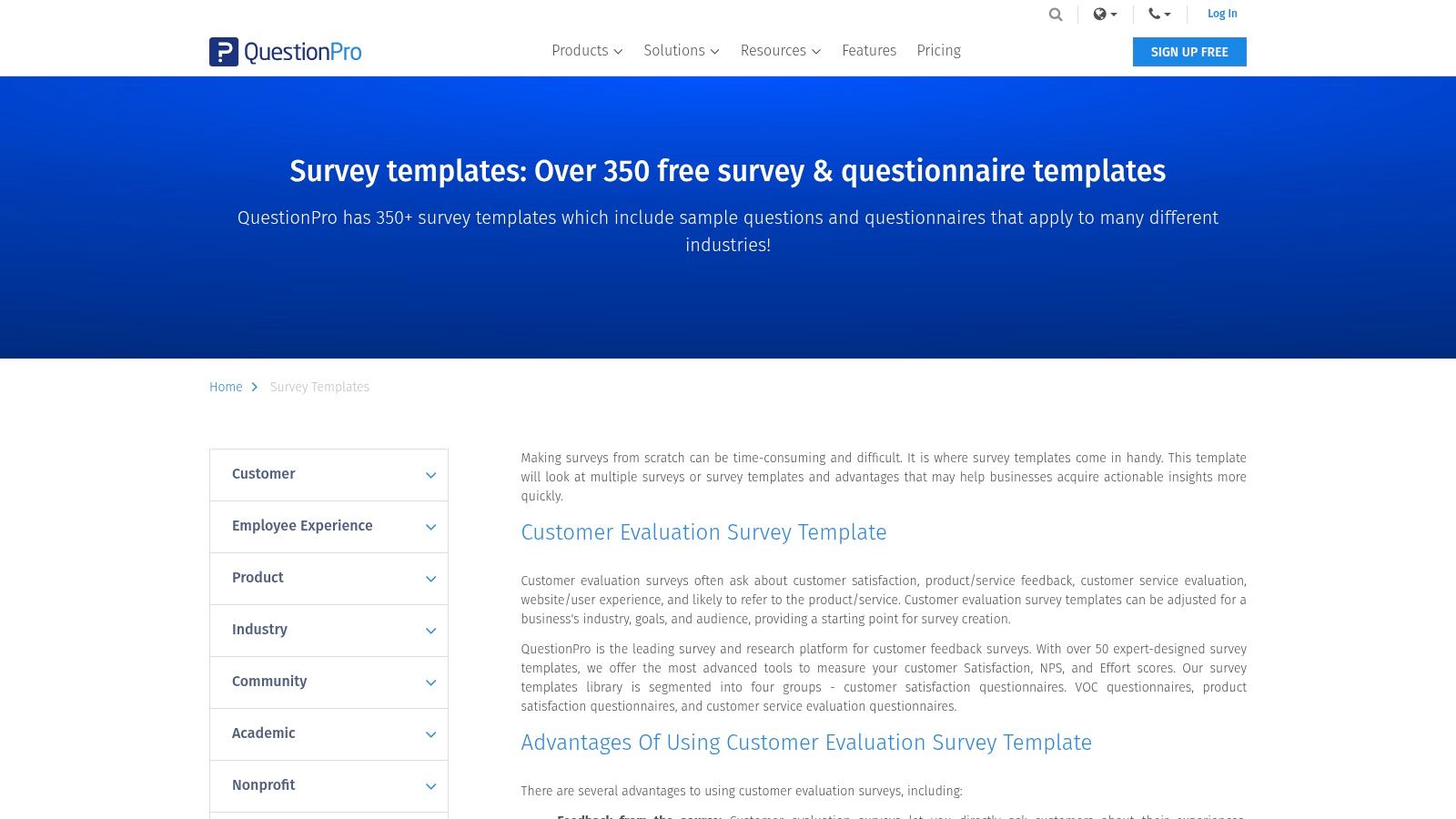
The platform is especially powerful for SaaS companies looking to scale their feedback operations without an immediate financial investment. Its free plan includes surprisingly advanced features, such as skip logic and branching, which are often locked behind paywalls on other platforms. This allows for the creation of dynamic, responsive surveys that guide users down different paths based on their answers, leading to more relevant data.
Key Details & Analysis
- Best Use Case: Ideal for marketing and customer success teams in diverse industries that require a wide array of specialized templates and advanced logic on a free plan.
- Unique Offering: The combination of a vast template library (350+) and the inclusion of advanced logic and branching in its free Essentials tier is a significant differentiator.
- Limitations: While powerful, the sheer number of features and customization options can present a steeper learning curve for users new to sophisticated survey tools.
- Implementation Tip: Leverage the "Product Feedback" template category to get started. Use the skip logic feature to ask follow-up questions only to users who rate a feature below a certain threshold, gathering targeted insights for improvement.
Access the templates here: QuestionPro Survey Templates
11. forms.app
forms.app excels for teams that need to deploy functional surveys rapidly without any coding. It provides over 47 free customer survey templates designed for speed and simplicity. This platform is perfect for gathering quick feedback on customer service, product satisfaction, or post-event experiences, allowing even non-technical team members to create and launch surveys in minutes.
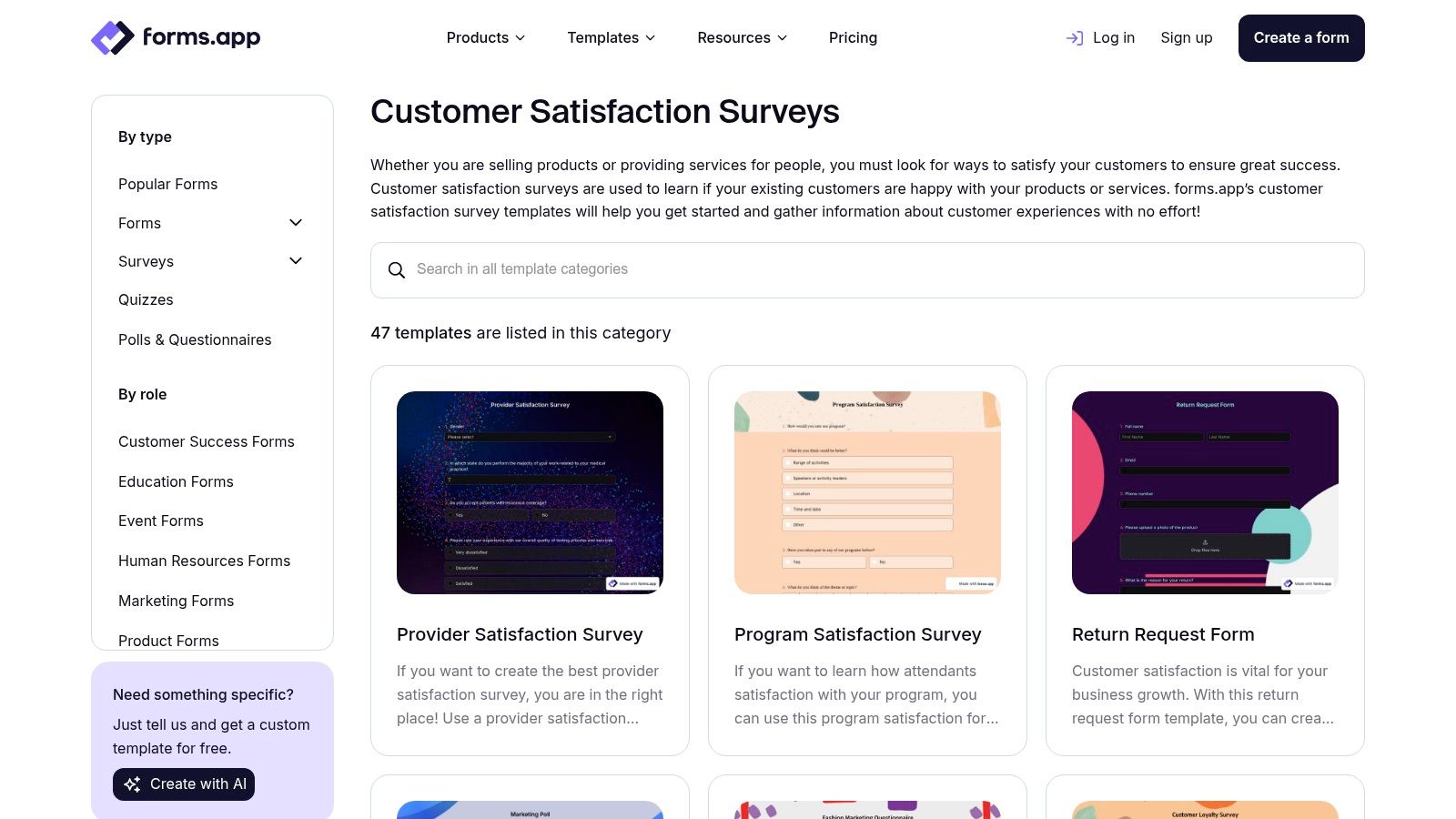
The strength of forms.app lies in its accessibility and ease of use. While exploring specific platforms, it's also useful to gain a broader perspective by understanding digital forms and the technology that powers modern data collection. forms.app makes this technology approachable, offering a user-friendly interface that simplifies customization and integrates smoothly with popular business tools like Slack and various CRMs.
Key Details & Analysis
- Best Use Case: Ideal for customer success and marketing teams needing to quickly create and share straightforward surveys, such as a Customer Effort Score (CES) or a simple product feedback form.
- Unique Offering: The platform's main differentiator is its combination of a generous free plan with a no-code, highly intuitive builder, making it one of the fastest ways to get a survey live.
- Limitations: While the free tier is robust, more complex logic, conditional branching, and removing forms.app branding require upgrading to a paid subscription.
- Implementation Tip: Use a pre-built template like "Customer Satisfaction Survey" as your base. Customize the thank-you page to redirect users to a relevant resource or landing page, maximizing engagement post-submission.
Access the templates here: forms.app Customer Satisfaction Survey Templates
12. SurveyPluto
SurveyPluto distinguishes itself by offering a collection of free customer survey templates designed for speed and simplicity, with no registration required to access them. This frictionless approach makes it an excellent choice for teams needing to deploy a survey quickly without committing to a new platform or going through a sign-up process. The emphasis is on productivity, providing straightforward, professional templates that can be copied and implemented immediately.
The platform is particularly useful for ad-hoc feedback needs, such as a quick pulse check on a new feature or gathering opinions after a webinar. While it lacks the deep analytical power of more complex systems, its strength lies in its accessibility and ease of use, allowing even non-technical team members to launch a survey in minutes. The templates are clean, well-structured, and cover common business scenarios effectively.
Key Details & Analysis
- Best Use Case: Ideal for marketing or customer success teams needing to quickly gather feedback for a specific event or interaction without the overhead of a full survey platform.
- Unique Offering: The primary differentiator is the completely barrier-free access. You can view, select, and use the templates instantly without providing an email or creating an account.
- Limitations: The platform's focus on simplicity means it lacks advanced features like complex skip logic, integrations, or in-depth analytics found in more robust tools.
- Implementation Tip: Use SurveyPluto for initial or informal data gathering. Since the templates are easy to access, you can quickly test different question formats for a specific use case before building a more complex version in your primary survey tool.
Access the templates here: SurveyPluto Templates
Top Features Comparison of 12 Free Survey Templates
Go Beyond Templates: Build a Proactive Feedback Culture
We've explored a comprehensive landscape of tools, from established giants like Qualtrics and SurveyMonkey to agile, form-focused solutions like Typeform and Jotform. Each platform offers a unique set of free customer survey templates that serve as a powerful launchpad for understanding your user base. Whether you need the deep analytics of a dedicated research tool or the seamless integration of a CRM like HubSpot, the right starting point is within this list.
The key takeaway is that a template is just the beginning. The real value isn't just in asking questions but in operationalizing the answers. Your goal should be to move beyond periodic, static surveys and cultivate a dynamic, continuous feedback loop directly within your SaaS application. This transforms customer feedback from a lagging indicator into a leading, proactive driver of growth, retention, and product development.
Choosing Your Path: How to Select the Right Tool
Making the right choice depends entirely on your team's current needs and future ambitions. Don't be swayed by the longest feature list; focus on the tool that solves your immediate problem most effectively while offering a clear path for growth.
Consider these factors when making your decision:
- For quick, one-off insights: If you need to quickly validate a feature idea or get a pulse on satisfaction after a support interaction, tools like Jotform, forms.app, or the basic tiers of SurveyMonkey and Typeform are excellent. Their intuitive builders and ready-made templates get you from question to insight in minutes.
- For integrated CX management: If your goal is to tie feedback directly to customer records and marketing workflows, HubSpot is the undeniable choice. Its native survey tools allow you to trigger automations and segment users based on their responses, creating a unified view of the customer journey.
- For in-depth product and user research: For SaaS teams needing sophisticated logic, detailed analytics, and advanced question types to inform the product roadmap, Qualtrics and QuestionPro offer powerful free tiers. These are built for deeper, more complex research projects.
- For operational and internal feedback: When feedback needs to live alongside your team's work, a project management tool like ClickUp is ideal. You can embed forms directly into tasks, turning customer suggestions into actionable items for your development sprints.
From Data Collection to a Culture of Action
Ultimately, the most effective free customer survey templates are the ones you actually use and act upon. The transition from simply collecting data to building a proactive feedback culture requires a strategic shift. It means embedding feedback opportunities at critical touchpoints in the user journey, not just sending an annual survey. It means automating the analysis to quickly identify trends, at-risk customers, and promoters.
Success lies in making feedback a part of your company's operational DNA. The tools we’ve covered provide the foundation, but the next step is to choose a system that doesn’t just store answers but helps you act on them intelligently. Your customer feedback shouldn't be a report you review quarterly; it should be the real-time pulse of your business, guiding every decision you make.
Ready to graduate from static forms to an intelligent, automated feedback engine built for SaaS? Surva.ai replaces cumbersome surveys with AI-powered, contextual micro-surveys that drive higher response rates and deliver actionable insights in real-time. Start turning your customer feedback into your biggest growth asset today by visiting Surva.ai.
